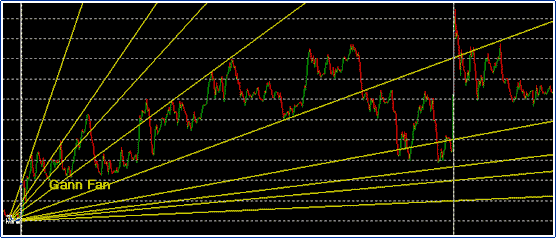Gann Studies: Reality Behind Legend
A Live Legend of All Times
Even in the boisterous world of finance,
where there never seems to be a dearth of men of
renown, it is rather seldom that figures of this
size and reputation appear: Mr. William Gann has
been referred to as a trading legend and the
most successful trader since the early 1920-s.
For the sake of justice, one should mention that
probably since about the same time he has been
called none other than a lucky marketer of ideas
by some others. In any event, his unique
predictive abilities and the forecasts he made
on both trading and non-trading issues are still
well-remembered and beyond any doubt. The
somewhat mystical air that the alleged use of
astrological concepts in his predictions made
Gann an all the more mysterious figure and his
theory more attractive to many.
William Delbert Gann was born to the family
of a cotton rancher on a Texas farm June 6,
1878. Being obliged to provide for his numerous
younger brothers and sisters, he had never
attended grammar or high school. Having moved to
NY at the age of 25, he set up a brokerage of
his own called W.D. Gann & Co. Gann's major
predictions include the end of WW1 in 1918, the
end of the Great Depression in the States in
1932 and Perl Harbor. He is the author of 8
books and one of the most popular trading
theories ever.
William Gann's ascension to the heights of
the world of finance began in 1908 when he
invented a theory called "the market time
factor." By using his newly invented trading
approach, he was able to make several tens of
thousand dollars using two accounts that
contained a total of just USD 450. A true Wall
Street celebrity, Gann was a tremendous success
as a commodities trader.
The Technology behind the Legend
The basis of Gann's theory was formed by the
following three maxims:
- There is nothing else to take into
consideration besides price, time and range;
- The markets move through certain cycles;
- The markets are geometric in nature.

The theory could be used for three major
types of predictions: price, time and pattern
forecasts. To make a forecast, you first need to
select a time period (normally an intermediate
or short-term time period) and choose the high
and low that will become the starting points for
the Gann lines. Normally, the high and low are
determined by employing some other technical
analysis method. When the high and low are
determined, a 1x1 or 1x2 pattern is applied, the
difference being in the angle of the line being
drawn. After the pattern or 'cycle" is completed
by linking the two points, similar 'cycles" down
the trend-line are searched for. Probably, this
is what has been so fascinating about the Gann
method - seemingly, it's like falling off a log,
just tack a crack, and you are a success. But
when you come to grips with the technique, all
the ease is gone. To locate the low and high,
Gann used some mathematical methods, including
and similar to Fibonacci. His amazing command of
those and, as is surmised now, some other
clandestine methods, is what is responsible for
most of his financial success.
During his life, Gann kept secret the
astrological methods he used for predicting
stock market actions. It is now said that all
the astrological work for Gann was performed by
two outstanding Canadian astrologists of the
time - Lorne Edward Johndro and Kenneth Brown.
All this says that there is a lot more to the
Gann theory than what the average trader knows
and can apply. Consequently, the average trader
is highly unlikely to be able to hone the
technique to the point when it starts bringing
in the kind of profit it earned for its
inventor. Most likely, the technique will serve
him as just another method that allows drawing
support and resistance lines. And unless you are
prepared to spend years on research and
mastering the technique, it is best to use the
Gann studies as just another method in your
combination that will help you prove a decision
made by applying the whole of the combination.
Or, better still, avoid using the method
altogether. |